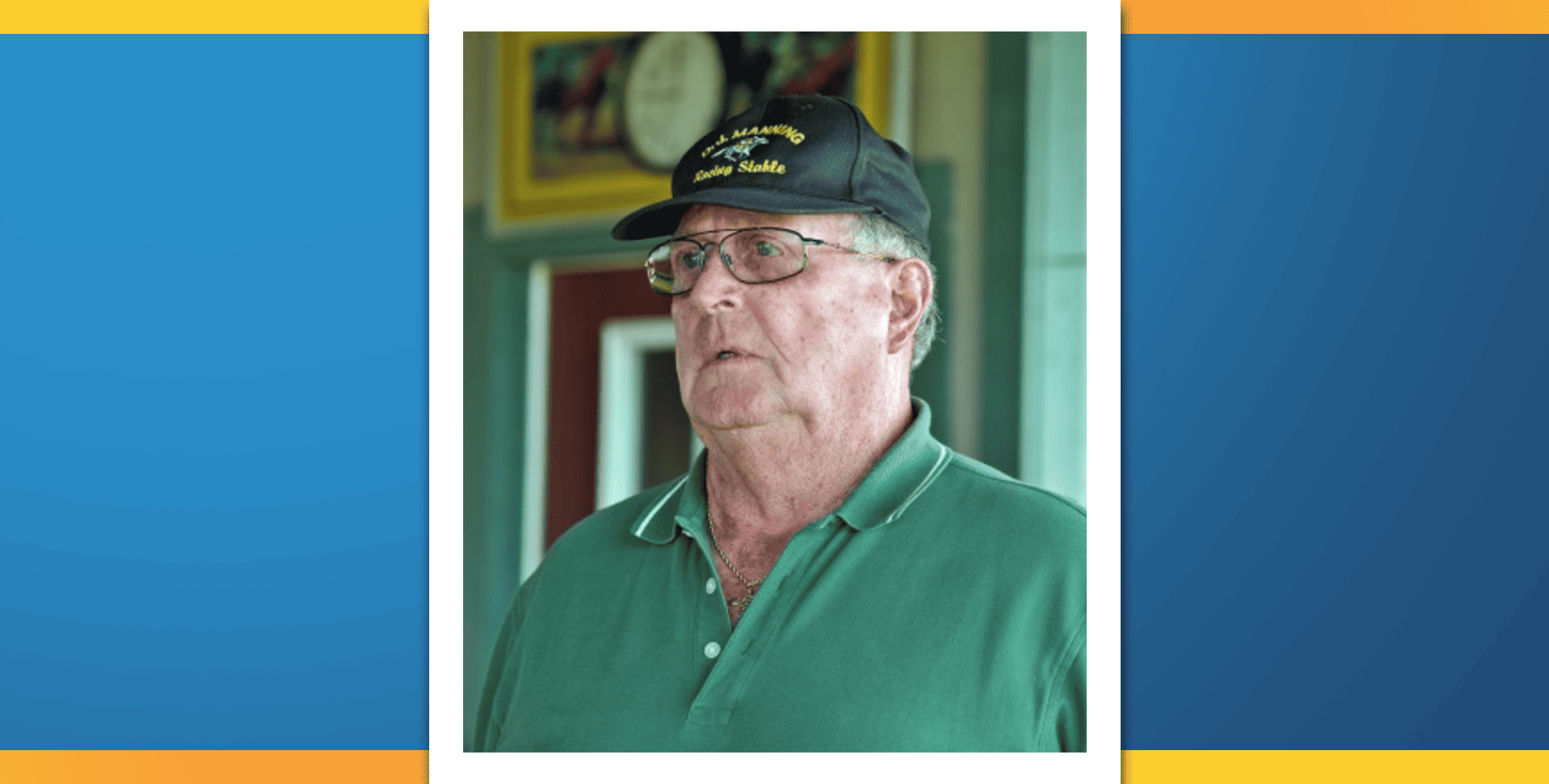BY SARAH WELK BAYNUM
Dennis Manning’s racing journey in the racing industry is a testament to lifelong passion deeply rooted in family and a natural affinity for equine. Growing up next to the Weymouth Fairgrounds in Massachusetts, Manning was immersed in the world of horse racing from an early age.
“I grew up next to the Weymouth Fairgrounds in Weymouth, Massachusetts, where the horses were stabled,” Manning recalled. “I used to go down, walk the horses, ride the pony, and help clean the stalls. My father was a trainer—and so was my sister and two of my brothers. They all worked with racehorses.”
What began as childhood curiosity soon transformed into a professional calling.
“I was exercise riding horses and became a jockey until I grew too heavy. I continued to exercise horses, though, and eventually obtained my trainer’s license. I’d say I was exercise-riding for nearly 15 years.”
His first taste of victory came at the Marshfield Fair, a moment etched in his memory.
“I won my first race at Marshfield Fair in Marshfield, Massachusetts, on a half-mile racetrack,” he shared. “It was a $600 race—$360 to the winner—and I won it riding a 13-year-old gray horse that looked white due to its age.”
Manning’s entrepreneurial spirit led him to purchase his first racehorse, a decision that would shape his entire career.
“I bought a horse for not a lot of money—his name was Ore. That’s when I got my trainer’s license and started training him along with a bunch of other horses.
“Before I knew it, I had another horse, then a client—and things just took off,” Manning explained. “Bobby D’Ascio, the racing secretary in Boston, kept giving me a stall. Soon, I had horses in four or five different barns until Bobby combined them all into one. I’ll never forget when he said, ‘You created a monster,’ when I had 25 or 30 horses.”
As the New England racing scene evolved, Manning adapted. He relocated his operations, moving through various racing circuits—from Meadowlands to Monmouth Park, then to Maryland and eventually Florida. His wife fell in love with Ocala, which became their permanent home.
“I spent my first winter racing in Maryland. The following winter, I decided to try Florida, so I came down to Ocala and spent the winter there, doing that for several years while shuttling back up north in the spring with about 40 horses.”
A pivotal moment came when his friend Bob Nelson developed the Oak Ridge Training Center. Although health challenges and the loss of a major client temporarily interrupted Manning’s personal racing business, he found a new purpose.
“I stayed in Florida, helping operate Oak Ridge year-round. I’ve been taking care of Oak Ridge ever since—it’s what I still do to this day. Eventually, I was elected president of the Oak Ridge board of directors.”
Among his many achievements, two horses stand out: Valid Video and Grand Hombre.
“Back in 2003, we had a horse named Valid Video. We won the King’s Bishop, a Grade 1 at Saratoga, with him. We even beat Ghostzapper … and I was proud of that. Then, just 10 days later, I came back with a horse named Grand Hombre and won the Pennsylvania Derby (G3).”
What makes Manning’s success remarkable is his ability to achieve greatness with modestly priced horses.
“I’ve won numerous stakes races, but the thing is, when I would win, I did it with horses that didn’t cost a lot of money. I never had horses that were worth a fortune. The most expensive horse in my barn was purchased for around $30,000—and it made it all the more special when it won big races. Valid Video only cost $17,000, and Grand Hombre was the one we paid $30,000 for. Horses, especially those horses, have made me what I am today.”
At the heart of Manning’s passion is the joy of nurturing young talent.
“The thing I enjoy most about being in the racing industry is taking a young horse, typically a 2-year-old, and bringing it to its full potential in its career while watching it grow and move forward along the way. That’s my thing—I love doing it and watching them succeed. Just as with Valid Video and Grand Hombre, I trained and developed them, helping to shape them into what they are—and I genuinely enjoy doing that.”
Return to the March 25 issue of Wire to Wire

